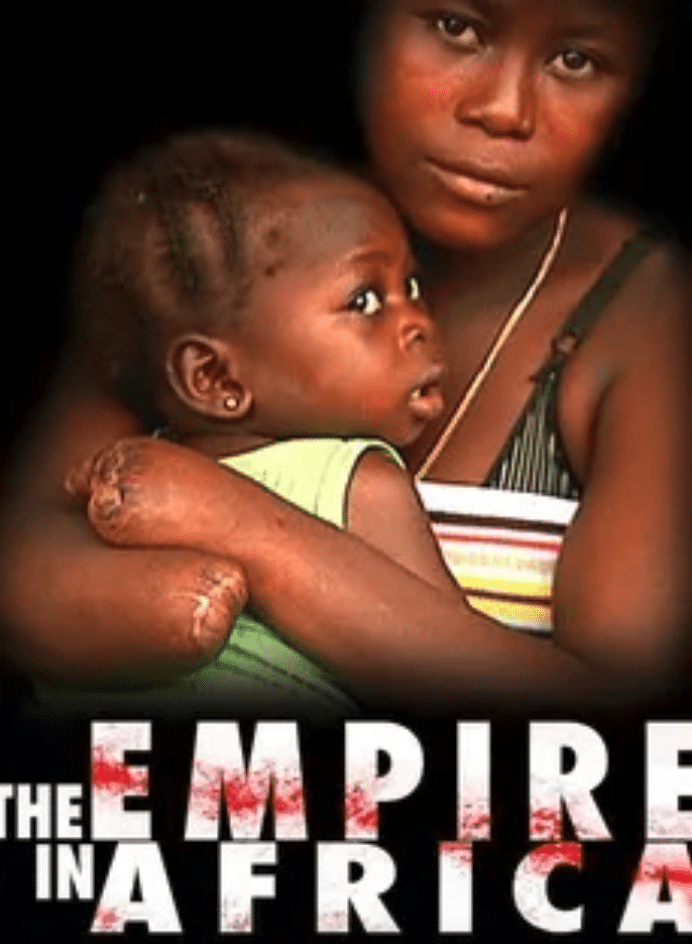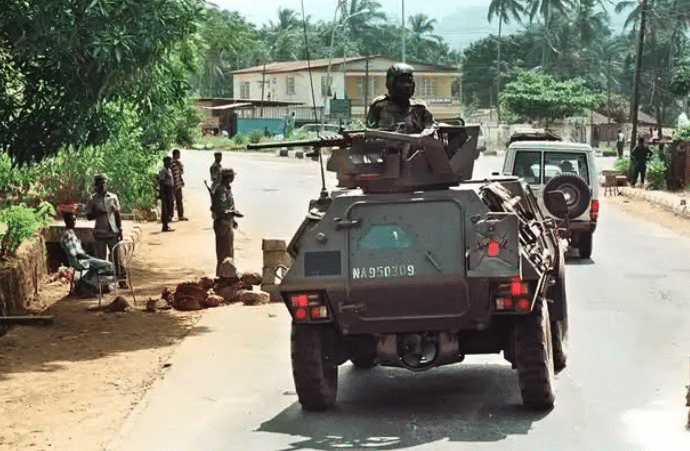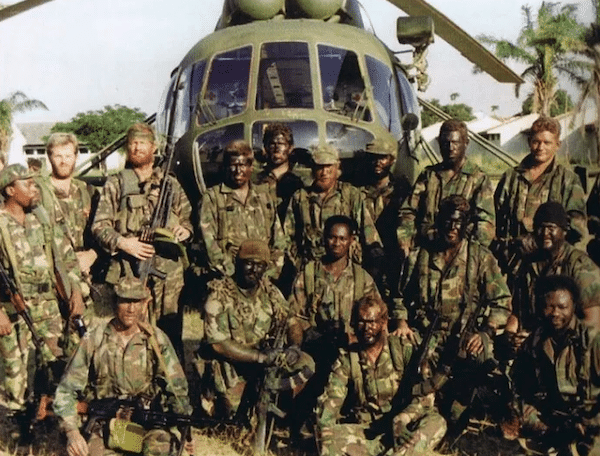The disastrous record of Western military interventions over the last half-century has left pundits grasping at straws to find something positive to point to.
Some have come up with Sierra Leone, arguing that the U.S./UK intervention in the 1990s, carried out largely under the cover of the UN and through use of private mercenary companies, was a model humanitarian intervention that should be emulated elsewhere.
Characteristic of the media coverage was a 2010 Guardian piece by Alex Renton titled: “Sierra Leone: one place where Tony Blair remains an unquestioned hero.” The article quoted a lighthouse keeper, Yamba Banday, who worked at the western-most point of Sierra Leone, who made it seem like the arrival of a British force bolstered the UN’s ability to save the country from takeover by primitive rebels who had taken peacekeepers hostage.
Renton wrote that “there was no strategic or commercial interest in the adventure, and none among the British public; this was the Blair/Cook ‘foreign policy with an ethical dimension’ in its purest, most altruistic form. But the Sierra Leone intervention worked—uniquely well, in the history of modern military interventions in Africa. The rebel forces were scared away from the city, the UN got off its knees and the government army was revitalised. Eighteen months later, Sierra Leone’s 11-year civil war was brought to an end. In the streets of Freetown at the time the graffiti read: ‘Queen Elizabeth for king!’ and ‘Return to us our colonial mother!’”
According to Renton,
Tony Blair [British Prime Minister from 1997 to 2007] remains more popular here than anywhere else on the planet. He still visits the country every couple of years, and officials from his office are seconded into the finance and health ministries. Several Sierra Leoneans said they would personally campaign for Blair to be the country’s president. A young Freetown documentary-maker, Arthur Pratt, told me: ‘We think we are to him as a favourite child.’

Tony Blair being honored by a native chief in Sierra Leone. [Source: thesierraleonetelegraph.com]
The Guardian’s analysis is reminiscent of hagiographic accounts of the British Empire from a past age, which selectively quoted native sources that were favorable to the British crown.
Left out in this case is the fact that Britain and the U.S. supported proxy forces that committed horrendous atrocities against the local population, and helped empower a leader, Ahmad Tejan Kabbah, with a tainted past who promoted neo-colonial policies that privileged foreign investors and ensured that the people of Sierra Leone would not primarily benefit from the country’s diamond wealth.
Today, Sierra Leone remains among the poorest countries in the world, ranking 182nd out of 189, according to the U.N.’s Human Development Index. Nearly 60% of people in Sierra Leone are food insecure, according to the World Food Program.
A 2022 Al Jazeera article quoted from the anti-corruption non-profit Transparency International, which concluded that “hundreds of millions of dollars generated by the extraction of diamonds continue to leave… the country, without benefitting anyone in the community.”

Uncut diamonds sold in Sierra Leone. [Source: aljazeera.com]
The Empire in Africa
Philippe Diaz is the founder of Cinema Libre Studio, a unique Hollywood entity that produces socially conscious films. In 2006, Diaz directed and co-produced a documentary about Sierra Leone’s civil war, The Empire in Africa, which punctures the myth of Sierra Leone as a model humanitarian intervention. (Watch the film here)
Set to the backdrop of Sierra Leonean music, The Empire in Africa features interviews with members of the Revolutionary United Front Party (RUFP) who were vilified in Western media and were the target of Western military intervention.

[Source: letterboxd.com]
As RUFP leader Mike Lamin, who briefly served as Minister of Mines, put it:
We will not allow any exploitation of Sierra Leone’s natural resources by foreigners.
These foreigners included diamond cartels like De Beers, which back in the 1980s carried out a deep diamond-mining venture assisted by a World Bank loan secured by Maurice Tempelsman, a CIA-linked businessman and intermediary for De Beers who was a major donor to the Democratic Party.1
Western media accused the RUFP of sadistic brutality; Diaz, however, shows that many of the atrocities in the civil war were committed by government forces and their militia, the Kamajors, as well as by Nigerian forces who formed the core of the Economic Community of West African States Monitoring Force (ECOMOG), the UN interventionist force heavily funded by the U.S., UK and Canada.

ECOMOG forces in Sierra Leone. [Source: thesierraleonetelegraph.com
In an exclusive interview with CovertAction Magazine, Diaz said that “every single major media [organization] around the world at the time—New York Times, Washington Post, LA Times, Times of London, Le Monde, etc.—was talking of millions of amputees by the [RUFP] rebels [in a country of only 4.5 million]. However, when I arrived in Sierra Leone, I saw none of those amputees. Later on, I was taken to a refugee camp where I saw around 100 to 120 amputees, but they confessed that they were paid to tell stories to the foreign media about rebel atrocities.”
Diaz continued:
When a fight happened between the rebels and government forces, all rebels captured were summarily executed on the spot—as you also saw in the film—or thrown alive from the Freetown bridge and shot while they were falling. When a soldier from the government forces was captured by the rebels, rather than execute him, they would cut his hand and tell him to go back to his village showing his hand, because ‘you don’t hold your hand against your brother!’”2
By the late 1990s, the RUFP had come to control a significant part of Sierra Leone, resulting in negotiations in Abidjan and the advent of a power-sharing agreement establishing a coalition government that included the RUFP and its leader Foday Sankoh.
Since RUFP policies went against Western economic interests, Western countries led by the U.S. and UK opposed the agreement and imposed elections that the RUFP boycotted because it believed that they would be rigged.
Confirming this latter view, Diaz calls the elections a “parody of democracy” whose results were manipulated to ensure the victory of the UN and UK’s favored candidate, Ahmad Tejan Kabbah.
Kabbah had lived for most of his life in New York and promoted a neo-liberal economic program that privileged foreign investors who sustained their control over the country’s diamond wealth.
Kabbah relied on a police force that was funded by the British and adopted hard-line policies against the RUFP, intensifying the civil war. With his support, the Kamajors would burn pro-RUFP villages and carry out beheadings.
After the Sierra Leone military carried out a coup against Kabbah, ECOMOG instituted a naval and road blockade and bombed all ships bringing in food and humanitarian supplies, accentuating the horrific humanitarian crisis.
The Clinton administration imposed devastating sanctions that sent the message that the population would starve unless Kabbah was returned to power.
When Kabbah was eventually restored, the British sent in mercenaries to shore up his regime and ECOMOG began deploying cluster bombs against rebel-held villages as Britain brought in more lethal weapons through frigates.
Many of the mercenaries worked for Executive Outcomes, a company staffed by South Africans who had committed grisly atrocities in the war to sustain apartheid.

[Source: casualoperator.com]
In Western capitals, ECOMOG was praised for bringing peace to Sierra Leone along with British military intervention.
However, S.Y.B. Rogers, an RUFP fighter, said in the film that British intervention had escalated and prolonged the war. Mike Lamin said that ECOMOG had come into Sierra Leone to “kill our people,” with many towns transformed into ghost towns because of it.
The end result of the war was the imposition of a neo-colonial government headed by Kabbah that served the interests of foreign powers under the guise of democracy.
Sadly, many of the RUFP members who were interviewed, including Foday Sankoh, died in prison after they were falsely accused of breaking a peace treaty.3
Anyone watching Diaz’s film can see that Sierra Leone was not a great success of U.S. or UK foreign policy. Rather, it was another disgrace where the only concern was profit and Black lives meant nothing.
Notes:
- ↩ See “Sierra Leone: From Athens to an Ill-Run Sparta,” Sierra Herald, July 28, 1980, sierraherald.com
- ↩ Diaz further told CovertAction Magazine: “All mass media bought the story of two million amputees which justified bombing the country for many years—like in Gaza today. The film premiered at the Cannes Film Festival where I was crucified by the mass media because I was saying they had been manipulated and were not doing their job. There were not two million amputees, maybe 2,000 to 5,000 at the most! But I remember that some of the journalists who wrote these articles returned there to see for themselves. And they came back and wrote a new article confirming what I was saying in the film.”
- ↩ The end credits point out that Sierra Leone is among the poorest countries in the world, where half the population struggles to live on less than one dollar per day. Diaz told CAM that, “when the government learned I interviewed the rebels, the Minister of Interior—who was the head of the militia—decided to seize all our tapes and equipment and said that, if I refused, I would be sent to Pademba Road Prison, which people were ‘disappearing’ from on a regular basis.”

